1 of 19
Download to read offline

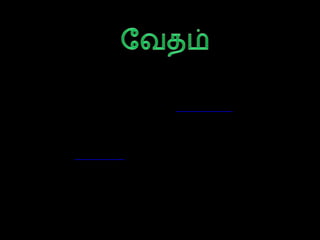






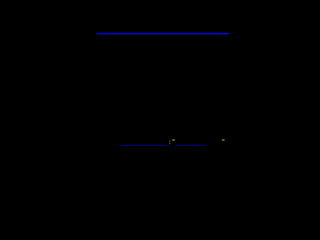



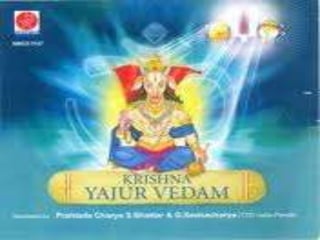


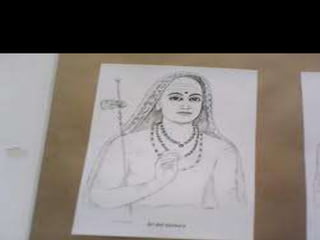
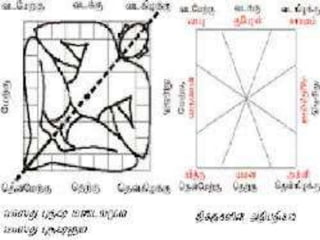

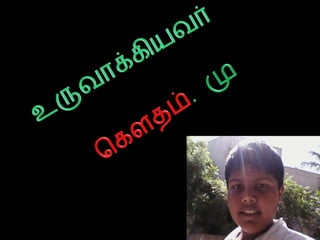
Ad
Recommended
BOOK OF PRAISE TO AGATHIYAR
BOOK OF PRAISE TO AGATHIYARShanmugam Avadaiyappa
╠²
This document contains several passages from sacred texts and teachings praising Agathiyar, a legendary Tamil alchemist and physician. It includes extracts from classical Tamil literature, prayers, and instructions for rituals honoring Agathiyar. The extracts are in Tamil and cover topics like Agathiyar's origins, deeds, virtues and powers as an enlightened master who spread spiritual and medical knowledge.The Daily Book of Prayers to Siddhas
The Daily Book of Prayers to SiddhasShanmugam Avadaiyappa
╠²
This document contains prayers, mantras, and rituals dedicated to various Hindu deities and Siddhas. It includes invocations to Ganesha, Murugan, Ayyappan and various forms of Shiva at the beginning. It then provides mantras and prayers attributed to 18 Siddhars, details abhishekam rituals using different substances like milk, curd, honey etc. It also includes poems in praise of Agastya, Bogar and other Siddhas. The document appears to be a prayer manual for devotees of the Siddha tradition.national parks of india
national parks of indiajaisreenivasan
╠²
Bandavgarh National Park is a protected area in India that was declared a national park by the state. It is home to diverse wildlife such as tigers, antelope, panthers, bears, wild dogs, and hyenas. The park also supports many bird species including darters, lapwings, storks, kingfishers, babblers, and crows. It aims to preserve rare and endangered species within its boundaries. tissue culture hybridization
tissue culture hybridizationjaisreenivasan
╠²
Tissue culture is a technique where small pieces of plant or animal tissue are cultured in a sterile medium outside of the organism. It was first developed in 1885 and has since been used extensively in medicine, agriculture, and research. It allows for the rapid duplication of plant materials while eliminating diseases and maintaining genetic traits. However, it requires specialized facilities and equipment and reduces genetic diversity. tissue culture hybridization
tissue culture hybridizationjaisreenivasan
╠²
Tissue culture is a technique where new plants are grown by removing plant tissue from the growing tip and placing it in an artificial medium where the cells divide rapidly to form a callus. The callus is then transferred to a medium containing hormones to promote growth and differentiation into plantlets. The plantlets are placed in soil to mature. Tissue culture allows many plants to be grown from one parent in disease-free conditions, and is commonly used for ornamental plants. tissue culture hybridization
tissue culture hybridizationjaisreenivasan
╠²
Plant tissue culture is a technique used in biotechnology where plant parts are grown in a sterile nutrient medium. It allows for micropropagation of plants through mitosis, saving time over traditional breeding. Explant material is sterilized and placed in a nutrient medium containing sugars, minerals, vitamins, and growth regulators. Cells dedifferentiate into callus which can then be grown into shoots or roots through manipulation of hormone levels in the medium. Plantlets are hardened before transplanting. Tissue culture was pioneered in the early 20th century and techniques have advanced, allowing mass production of plants for agriculture, research, and conservation of rare species. tissue culture hybridization
tissue culture hybridizationjaisreenivasan
╠²
The document discusses different types of hybrids that can occur between organisms, including intra-specific, interspecific, and intergeneric hybrids. It provides examples of both plant and animal hybrids that have been intentionally or naturally created, such as blood parrot cichlids, mule ducks, and killer bees. The document also covers concerns about hybridization between domesticated and wild species, as well as between purebred populations. tissue culture hybridization
tissue culture hybridizationjaisreenivasan
╠²
The document discusses different types of hybridization including single cross, double cross, three-way cross, and triple cross hybrids. It provides examples of hybrid animals like mules, ligers, and wholphins. Plant hybridization is more common than animal hybridization due to differences in pollination and chromosome doubling. The document notes that hybridization can threaten extinction if a population becomes entirely hybridized, and conservationists disagree on how to manage hybrid and pure populations. tissue culture hybridization
tissue culture hybridizationjaisreenivasan
╠²
Tissue culture is the propagation of plants using plant parts, single cells, or cell groups grown in a sterile, controlled environment. Banana is an important crop for India, contributing 37% of total fruit production. It grows best in tropical climates between 13-38┬░C with humidity of 75-85%. Good soil for banana has drainage, fertility, and moisture with a pH of 6-7.5. Common varieties include Grand Naine, which is becoming most popular for its stress tolerance and fruit quality. Land preparation involves adding organic matter to pits or furrows which are then planted with banana plants. tissue culture hybridization
tissue culture hybridizationjaisreenivasan
╠²
Tissue culture involves growing cells or tissues outside of the organism in a defined environment that can be easily manipulated. In 1885, Wilhelm Roux established the basic principle of tissue culture by maintaining a section of embryonic chicken tissue in saline solution. Modern tissue culture generally refers to growing cells from multicellular organisms in vitro. Tissue culture is an important tool for studying cell biology and provides a controlled environment for analysis. Plant tissue culture techniques allow for propagation of plants under sterile conditions and offer advantages over traditional propagation methods such as rapid cloning of desirable traits. tissue culture hybridization
tissue culture hybridizationjaisreenivasan
╠²
Modern plant tissue culture is performed under sterile conditions with filtered air. Plant materials from the environment are naturally contaminated with microorganisms, so they must be sterilized in chemical solutions like sodium hypochlorite or mercuric chloride. Explants are then placed on solid or liquid culture media composed of inorganic salts, organic nutrients, vitamins, and plant hormones to induce cell growth and differentiation. Solid media contain a gelling agent like purified agar. tissue culture hybridization
tissue culture hybridizationjaisreenivasan
╠²
Plant tissue culture, also known as micropropagation, uses sterilized plant parts or seeds placed in sterile containers with nutrient-rich gel medium to propagate plants. The explants are prevented from infection by microorganisms during rooting or multiplying. Exact copies of donor plants can be created using this method, which is useful for cloning plants with desirable traits faster than traditional propagation. The process involves establishing an aseptic culture, multiplying propagules, preparing propagules for soil transfer, and establishing plants in soil. Tissue culture allows for rapid multiplication of plants from a single explant in a brief period. tissue culture hybridization
tissue culture hybridizationjaisreenivasan
╠²
Tissue culture is the growth of tissues or cells outside of the organism, typically using liquid, semi-solid, or solid growth media. In 1885, Wilhelm Roux established the basic principle of tissue culture by maintaining a section of embryonic chicken medullary plate in saline solution. In 1907, Ross Harrison demonstrated nerve cell growth in frog lymph. In 1913, Steinhardt et al. grew vaccinia virus in guinea pig corneal tissue fragments, establishing one of the earliest virus cultures.mathematics in architecture
mathematics in architecturejaisreenivasan
╠²
The document discusses various architectural structures from around the world and through history that incorporate principles of geometry, mathematics, and the golden ratio. Many famous structures like the Parthenon, Taj Mahal, and Notre Dame used proportions and dimensions based on the golden ratio or other mathematical concepts. City planning in ancient India also incorporated mandalas and geometric patterns rooted in cosmological principles. Overall, the document shows how mathematics and principles of structure have long been applied in architectural design around the world.Visualising solid shapes
Visualising solid shapesjaisreenivasan
╠²
This document discusses different properties of 2D and 3D shapes including dimension, length, area, surface area, and volume. It defines each property and provides examples of when we experience these properties in everyday life such as measuring the length of an object, noticing the different sizes of pizza slices, wrapping presents, and measuring ingredients. The document contains visuals of common 3D shapes like spheres, cones, cubes, pyramids, and cylinders to help explain the concepts.pi
pijaisreenivasan
╠²
Pi is the ratio of a circle's circumference to its diameter. Ancient Egyptian and Babylonian mathematicians approximated pi as fractions like 256/81 and 25/8. Later, Indian, Greek, and Chinese mathematicians calculated more accurate approximations, with Archimedes proving pi is between 3 1/7 and 3 10/71. Over centuries, mathematicians have computed pi to increasing decimal places of accuracy using new calculation methods. Pi is now known to at least one trillion decimal places and has many uses in mathematics, science, and engineering.minerals and power resources
minerals and power resourcesjaisreenivasan
╠²
Minerals are naturally occurring substances found in the Earth's crust. They have distinct physical and chemical properties. The three main types of mining are open cast mining, shaft mining, and drilling. Minerals are found in metamorphic, igneous, and sedimentary rocks. Some key mineral resources and their locations include iron ore in India and China, tin in Malaysia and Indonesia, coal in Germany and Western US, and petroleum and natural gas in Middle Eastern countries.Vedic maths .PPT
Vedic maths .PPTjaisreenivasan
╠²
Vedic mathematics is a system of mathematics consisting of 16 sutras or aphorisms obtained from ancient Hindu scriptures called the Vedas. It was presented in the early 20th century by Bharati Krishna Tirthaji Maharaja, an Indian scholar. The sutras provide concise formulae for solving problems through unique techniques like vertically-and-crosswise calculations without needing multiplication tables beyond 5x5. Some examples include techniques for squaring numbers and multiplying multi-digit numbers mentally through a carry-over method. Vedic mathematics was applied in areas like astronomy, astrology and constructing calendars.More Related Content
More from jaisreenivasan (20)
national parks of india
national parks of indiajaisreenivasan
╠²
Bandavgarh National Park is a protected area in India that was declared a national park by the state. It is home to diverse wildlife such as tigers, antelope, panthers, bears, wild dogs, and hyenas. The park also supports many bird species including darters, lapwings, storks, kingfishers, babblers, and crows. It aims to preserve rare and endangered species within its boundaries. tissue culture hybridization
tissue culture hybridizationjaisreenivasan
╠²
Tissue culture is a technique where small pieces of plant or animal tissue are cultured in a sterile medium outside of the organism. It was first developed in 1885 and has since been used extensively in medicine, agriculture, and research. It allows for the rapid duplication of plant materials while eliminating diseases and maintaining genetic traits. However, it requires specialized facilities and equipment and reduces genetic diversity. tissue culture hybridization
tissue culture hybridizationjaisreenivasan
╠²
Tissue culture is a technique where new plants are grown by removing plant tissue from the growing tip and placing it in an artificial medium where the cells divide rapidly to form a callus. The callus is then transferred to a medium containing hormones to promote growth and differentiation into plantlets. The plantlets are placed in soil to mature. Tissue culture allows many plants to be grown from one parent in disease-free conditions, and is commonly used for ornamental plants. tissue culture hybridization
tissue culture hybridizationjaisreenivasan
╠²
Plant tissue culture is a technique used in biotechnology where plant parts are grown in a sterile nutrient medium. It allows for micropropagation of plants through mitosis, saving time over traditional breeding. Explant material is sterilized and placed in a nutrient medium containing sugars, minerals, vitamins, and growth regulators. Cells dedifferentiate into callus which can then be grown into shoots or roots through manipulation of hormone levels in the medium. Plantlets are hardened before transplanting. Tissue culture was pioneered in the early 20th century and techniques have advanced, allowing mass production of plants for agriculture, research, and conservation of rare species. tissue culture hybridization
tissue culture hybridizationjaisreenivasan
╠²
The document discusses different types of hybrids that can occur between organisms, including intra-specific, interspecific, and intergeneric hybrids. It provides examples of both plant and animal hybrids that have been intentionally or naturally created, such as blood parrot cichlids, mule ducks, and killer bees. The document also covers concerns about hybridization between domesticated and wild species, as well as between purebred populations. tissue culture hybridization
tissue culture hybridizationjaisreenivasan
╠²
The document discusses different types of hybridization including single cross, double cross, three-way cross, and triple cross hybrids. It provides examples of hybrid animals like mules, ligers, and wholphins. Plant hybridization is more common than animal hybridization due to differences in pollination and chromosome doubling. The document notes that hybridization can threaten extinction if a population becomes entirely hybridized, and conservationists disagree on how to manage hybrid and pure populations. tissue culture hybridization
tissue culture hybridizationjaisreenivasan
╠²
Tissue culture is the propagation of plants using plant parts, single cells, or cell groups grown in a sterile, controlled environment. Banana is an important crop for India, contributing 37% of total fruit production. It grows best in tropical climates between 13-38┬░C with humidity of 75-85%. Good soil for banana has drainage, fertility, and moisture with a pH of 6-7.5. Common varieties include Grand Naine, which is becoming most popular for its stress tolerance and fruit quality. Land preparation involves adding organic matter to pits or furrows which are then planted with banana plants. tissue culture hybridization
tissue culture hybridizationjaisreenivasan
╠²
Tissue culture involves growing cells or tissues outside of the organism in a defined environment that can be easily manipulated. In 1885, Wilhelm Roux established the basic principle of tissue culture by maintaining a section of embryonic chicken tissue in saline solution. Modern tissue culture generally refers to growing cells from multicellular organisms in vitro. Tissue culture is an important tool for studying cell biology and provides a controlled environment for analysis. Plant tissue culture techniques allow for propagation of plants under sterile conditions and offer advantages over traditional propagation methods such as rapid cloning of desirable traits. tissue culture hybridization
tissue culture hybridizationjaisreenivasan
╠²
Modern plant tissue culture is performed under sterile conditions with filtered air. Plant materials from the environment are naturally contaminated with microorganisms, so they must be sterilized in chemical solutions like sodium hypochlorite or mercuric chloride. Explants are then placed on solid or liquid culture media composed of inorganic salts, organic nutrients, vitamins, and plant hormones to induce cell growth and differentiation. Solid media contain a gelling agent like purified agar. tissue culture hybridization
tissue culture hybridizationjaisreenivasan
╠²
Plant tissue culture, also known as micropropagation, uses sterilized plant parts or seeds placed in sterile containers with nutrient-rich gel medium to propagate plants. The explants are prevented from infection by microorganisms during rooting or multiplying. Exact copies of donor plants can be created using this method, which is useful for cloning plants with desirable traits faster than traditional propagation. The process involves establishing an aseptic culture, multiplying propagules, preparing propagules for soil transfer, and establishing plants in soil. Tissue culture allows for rapid multiplication of plants from a single explant in a brief period. tissue culture hybridization
tissue culture hybridizationjaisreenivasan
╠²
Tissue culture is the growth of tissues or cells outside of the organism, typically using liquid, semi-solid, or solid growth media. In 1885, Wilhelm Roux established the basic principle of tissue culture by maintaining a section of embryonic chicken medullary plate in saline solution. In 1907, Ross Harrison demonstrated nerve cell growth in frog lymph. In 1913, Steinhardt et al. grew vaccinia virus in guinea pig corneal tissue fragments, establishing one of the earliest virus cultures.mathematics in architecture
mathematics in architecturejaisreenivasan
╠²
The document discusses various architectural structures from around the world and through history that incorporate principles of geometry, mathematics, and the golden ratio. Many famous structures like the Parthenon, Taj Mahal, and Notre Dame used proportions and dimensions based on the golden ratio or other mathematical concepts. City planning in ancient India also incorporated mandalas and geometric patterns rooted in cosmological principles. Overall, the document shows how mathematics and principles of structure have long been applied in architectural design around the world.Visualising solid shapes
Visualising solid shapesjaisreenivasan
╠²
This document discusses different properties of 2D and 3D shapes including dimension, length, area, surface area, and volume. It defines each property and provides examples of when we experience these properties in everyday life such as measuring the length of an object, noticing the different sizes of pizza slices, wrapping presents, and measuring ingredients. The document contains visuals of common 3D shapes like spheres, cones, cubes, pyramids, and cylinders to help explain the concepts.pi
pijaisreenivasan
╠²
Pi is the ratio of a circle's circumference to its diameter. Ancient Egyptian and Babylonian mathematicians approximated pi as fractions like 256/81 and 25/8. Later, Indian, Greek, and Chinese mathematicians calculated more accurate approximations, with Archimedes proving pi is between 3 1/7 and 3 10/71. Over centuries, mathematicians have computed pi to increasing decimal places of accuracy using new calculation methods. Pi is now known to at least one trillion decimal places and has many uses in mathematics, science, and engineering.minerals and power resources
minerals and power resourcesjaisreenivasan
╠²
Minerals are naturally occurring substances found in the Earth's crust. They have distinct physical and chemical properties. The three main types of mining are open cast mining, shaft mining, and drilling. Minerals are found in metamorphic, igneous, and sedimentary rocks. Some key mineral resources and their locations include iron ore in India and China, tin in Malaysia and Indonesia, coal in Germany and Western US, and petroleum and natural gas in Middle Eastern countries.Vedic maths .PPT
Vedic maths .PPTjaisreenivasan
╠²
Vedic mathematics is a system of mathematics consisting of 16 sutras or aphorisms obtained from ancient Hindu scriptures called the Vedas. It was presented in the early 20th century by Bharati Krishna Tirthaji Maharaja, an Indian scholar. The sutras provide concise formulae for solving problems through unique techniques like vertically-and-crosswise calculations without needing multiplication tables beyond 5x5. Some examples include techniques for squaring numbers and multiplying multi-digit numbers mentally through a carry-over method. Vedic mathematics was applied in areas like astronomy, astrology and constructing calendars.